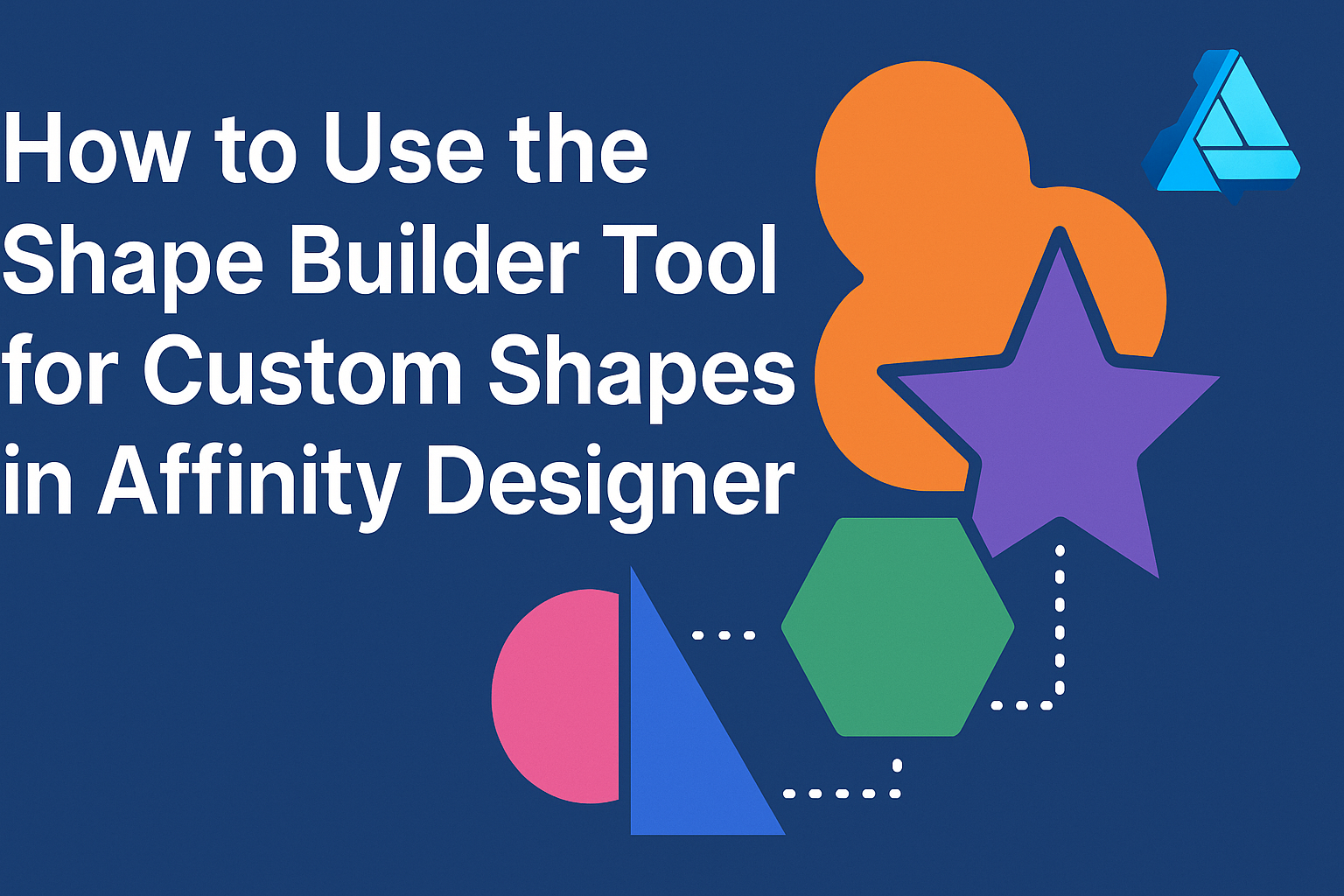The Shape Builder Tool in Affinity Designer offers a fun and efficient way to create custom shapes. This powerful tool allows users to combine, add, or remove shapes easily, making the design process smoother and more intuitive.
Whether someone is a beginner or has experience, mastering this tool can greatly enhance their graphic design projects.
Using the Shape Builder Tool can transform ordinary shapes into unique designs with just a few clicks. By selecting multiple objects, users can manipulate them to form complex shapes effortlessly.
Designers can also streamline their workflow by eliminating unnecessary steps, making their creative process more enjoyable.
Learning to use this tool opens up a world of creative possibilities. Designers can explore various combinations and tweaks to bring their visions to life. With simple techniques, they can create stunning visuals that stand out.
Getting Started with the Shape Builder Tool
The Shape Builder Tool in Affinity Designer allows users to create custom shapes quickly and easily. This section provides essential information on how to access the tool and understand its interface.
Accessing the Shape Builder Tool in Affinity Designer
To begin, users can find the Shape Builder Tool in the toolbar. It is represented by an icon that looks like overlapping shapes. If the tool is not visible, it might be hidden in the Shape or Pen Tool options.
Once located, simply click the icon. Alternatively, users can use the keyboard shortcut Shift + M to activate it quickly.
Before using the tool, users must select at least two overlapping shapes. This is crucial because the Shape Builder Tool works by combining selected shapes into new custom designs.
Understanding the Tool’s Interface
The Shape Builder Tool’s interface is user-friendly and straightforward. When the tool is active, a cursor changes to show the selected shapes. This cursor helps users see what will happen when they click.
Users can create new shapes by clicking and dragging across intersecting areas of the selected shapes. Filling can also be adjusted.
On the top bar, there are options to toggle between adding and subtracting shapes. The icons help users determine whether they want to combine shapes or cut out parts. Mastering these features can make a big difference in workflow efficiency and creativity.
Creating Custom Shapes
The Shape Builder Tool in Affinity Designer allows users to create unique custom shapes by combining, subtracting, and merging basic forms. This section covers essential techniques that help in crafting complex designs that fit specific needs.
Combining Simple Shapes into Complex Designs
To start using the Shape Builder Tool, the first step is combining simple shapes like circles, rectangles, or polygons. Users can select multiple shapes at once, ensuring they overlap appropriately.
When selected, the tool highlights available areas to manipulate. By clicking on these areas, users can merge shapes to create a more intricate design. It’s helpful to explore various combinations, as even small adjustments can lead to unique outcomes.
Once the shapes are combined, users can further refine their design by resizing and repositioning individual components. This exploration is vital for achieving the desired look and feel.
Using the Subtract and Divide Methods
The subtract and divide methods are effective for creating negative space and distinct designs. To use these functions, a user selects the shapes they want to manipulate first.
Subtract allows users to remove selected areas from one shape. This is useful for creating cut-outs and intricate designs.
Divide takes the selected shapes and splits them into separate parts based on their overlaps. This method is perfect for intricate designs where separating individual components is beneficial. Users can then modify these new shapes as needed, offering flexibility in design.
Applying the Merge and Intersect Functions
The merge and intersect functions are crucial for finalizing the design process. Merge combines selected shapes into one solid piece. This is particularly useful when users want to ensure consistency or when delivering a clean final shape.
Intersect works by identifying only the areas where selected shapes overlap. This function generates a new shape that reflects these overlapping areas. Users often find this method advantageous for producing designs with precise details.
Each of these functions provides different creative possibilities. Experimenting with them helps users discover unique shapes that enhance their projects.
Refining and Editing Shapes
Refining and editing shapes in Affinity Designer allows for greater control over designs. By manipulating anchor points and adjusting shape properties, users can create polished, custom graphics that meet their specific needs.
Manipulating Anchor Points and Curves
To reshape a design, working with anchor points is essential. Selected anchor points can be moved individually to alter the shape’s outline. Users should use the Node Tool to click on any anchor point and drag it to a new location.
Curves can also be adjusted through the handles connected to each anchor point. Users can click and drag these handles to change the curvature of a shape, creating smooth transitions. For precise adjustments, zooming in on the shape can help identify the exact point that needs tweaking.
Adjusting Shape Properties
Shape properties allow further customization by changing fill colors, stroke styles, and widths.
To access these options, users can select the shape and explore the Context Toolbar.
It displays various properties that can be tailored to enhance the design.
Users can choose to apply a gradient, solid color, or pattern to the fill.
For outlines, the stroke can be made thicker or dashed for added flair.
Additionally, adjusting the opacity can make designs more subtle or bold.
These changes can dramatically affect the overall feel of the creation, making it vital to experiment with different settings to find the best combination.

